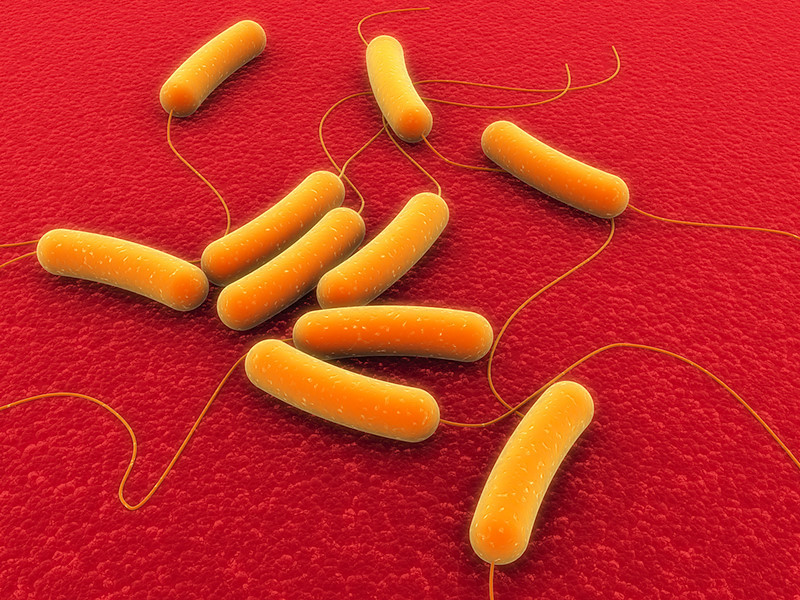Bacteria
 Living organisms can be divided into four main groups known as kingdoms: bacteria, fungi, plants and animals.
Living organisms can be divided into four main groups known as kingdoms: bacteria, fungi, plants and animals. - Bacteria are microscopically small unicellular organisms. They can be found almost everywhere: in the water, on the ground, in our skin, and even in our digestive systems.
- Some bacteria are parasites, whereas others are decomposers. Some bacteria are capable of photosynthesis, which means that they are autotrophic organisms.
- Some bacteria are harmful or even dangerous, as they can cause illnesses and diseases (the picture on the right shows E. coli bacteria, which cause diarrhea in humans).
- Bacteria reproduce quickly and in a straightforward manner: a bacterium cell can divide every 10 minutes!
- All bacteria are not harmful. For example, the human digestive system requires certain beneficial bacteria to function properly.
- Bacteria cells do not have nuclei, which means that they are prokaryotic organisms. They are the oldest group of living organisms in the world.
The characteristics of bacteria:
- no nuclei (=prokaryotic)
- unicellular
- microscopically small
- the first living organisms on planet Earth
- reproduce asexually by dividing
- can survive harsh conditions
- found almost everywhere on Earth
- both autotrophic and heterotrophic organisms